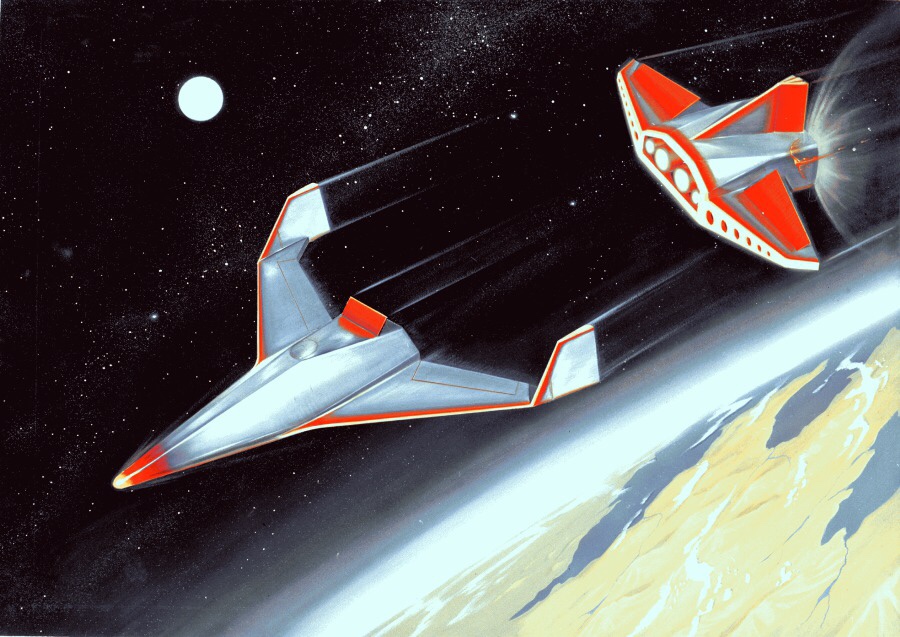
Apple’s For All Mankind SFTV drama might has sparked an uptick in interest in alternate space history, and there are plenty of “What Might Have Been” moments in space exploration you could also draw from, including plans for a “Space Glider”, that never happened.
The designs featured here, by John M. Sentovic, include a visualisation of a “Boost Glider” proposed by Krafft Arnold Ehricke, a German rocket-propulsion engineer and advocate for space colonisation.
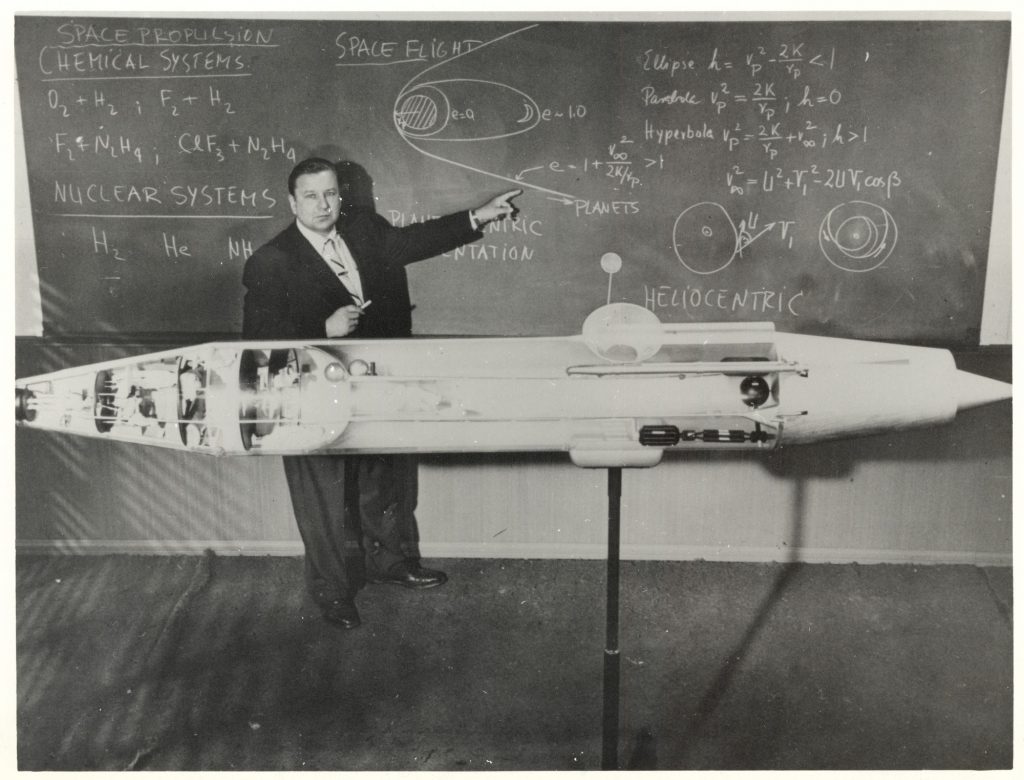
A contemporary of Wernher von Braun, Ehricke worked as a Research Engineer for the Research and Development Service of the United States Army in the late 1940s. In 1952, he was recruited by Walter Dornberger, another German rocket scientist, and left government service for private industry, moving to Buffalo, New York, to work as a Design Specialist at Bell Aircraft.
In 1955, he worked on Bell’s Orbital Glider project, later known as Bell Rocket Transport. The space glider was part of wider hopes and proposals for a space station in Earth orbit, plans hampered by budget cuts and eventually pushed back in favour of the race to the moon, The manned glider that would be boosted into shallow Earth orbit, and bounce in and out of the top of the atmosphere for part or all of a revolution of the planet, then land like an airplane.
The proposal was rejected by NASA, along with others, in favour of Project Dyna-Soar, inaugurated in November 1957, the Air Force’s plan for a reusable boost-glide weapon system that itself prefigured NASA’s Space Shuttle.
In May 1958, National Advisory Committee for Aeronautics, the precursor to NASA established in 1915 had agreed to help with the technical side of the project. NASA continued that support, but Dyna-Saur, also known as the X-20 Project, was abandoned in September 1963, an estimated two one-half years and $373 million away from its first flight.
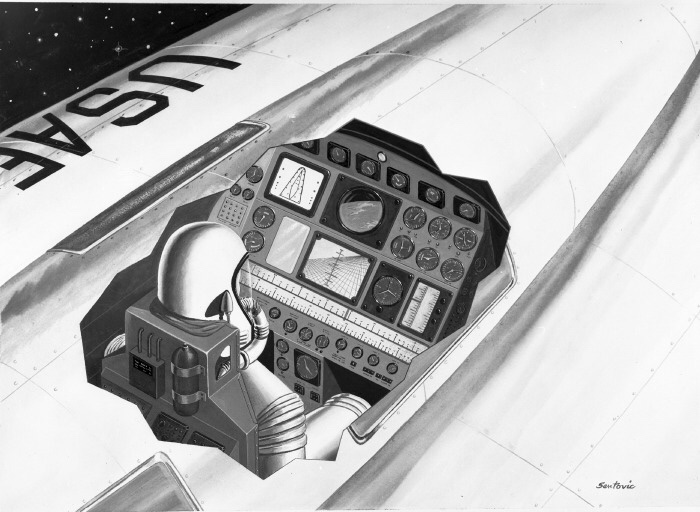
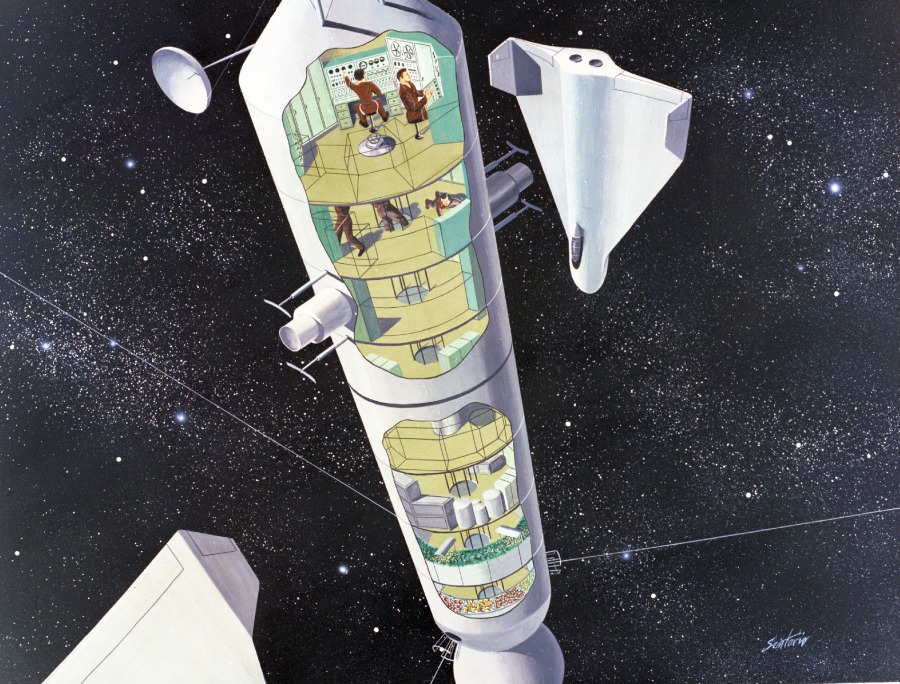
Space gliders feature in a number of the illustrations by John M. Sentovic, who was special assistant to Dr. Krafft Ehrike at Convair Astronautics, and was a contributor to Life Magazine; Missile & Rockets Magazine.
He also contributed to an award-winning deck of playing cards “Space Cards” developed by the General Dynamics (Convair) Astronautics Art Section, whose artists also included MAD Magazine luminary Jack Davis.
And yes – there is a British comics connection. In 1961, Longacre Press published the Eagle Book of Rockets and Space Travel – written by John WR Taylor and Maurice Allard, utilising Sentovic’s illustrations!
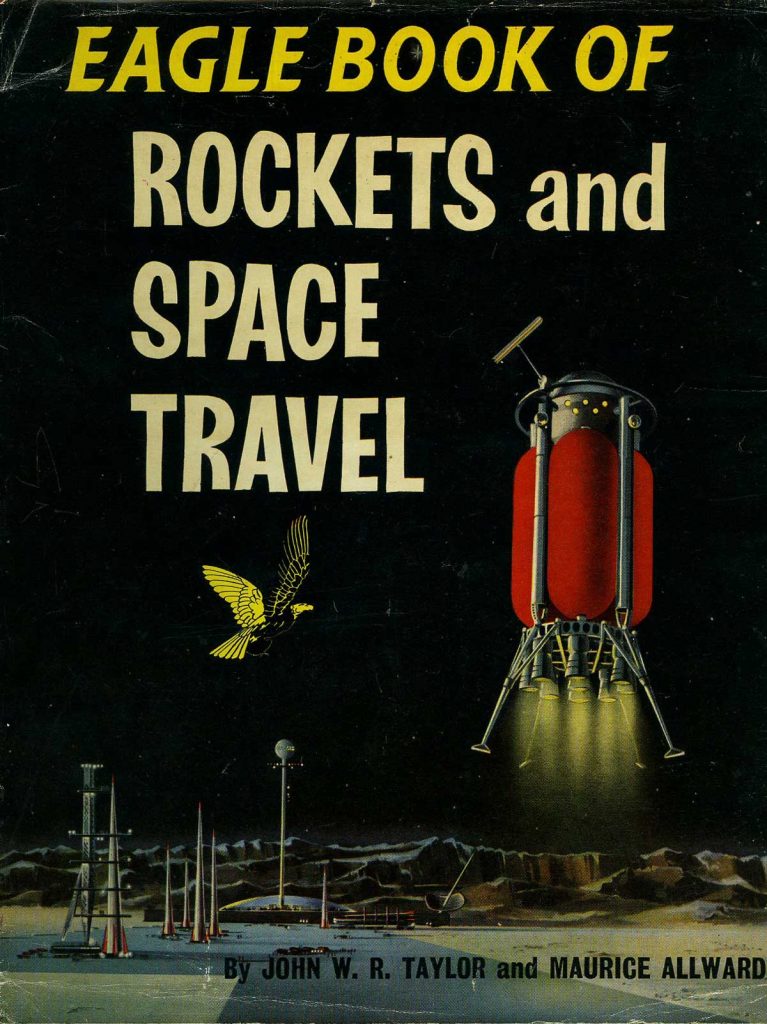
WEB LINKS
•. Astronautix: Krafft Arnold Ehricke Profile | Wikipedia
• Krafft Ehricke papers at the Smithsonian | PDF
This collection is composed of Krafft Ehricke’s files including Ehricke’s published and unpublished papers as well as papers and works by others that Ehricke gathered, presumably as reference material.
• Astronautix: Bell Rocket Transport
• NASA History: Transiting from Air to Space
• NASA History: On the Fringes of Space
• NASA: The Origins of Centaur
• Dreams of Space – Books and Ephemera: Eagle Book of Rockets and Space Travel
• Defense Media Network – X-20 Dyna-Soar Spaceplane Was Decades Ahead of Its Time
• The Rise and Fall of Dyna-Saur (PDF- large, takes a while to load)
• Astronautix: The First Re-Entry Glider (1960)
• Astronautix: Re-Entry Glider-Six Crew (1963)
• Popular Mechanics: This Is NASA’s Very First Idea for a Space Station
Before President Kennedy made his famous call in 1961 to land on the Moon by the end of the decade, the lunar surface wasn’t NASA’s intended destination. Instead, NASA had envisioned an Earth-orbiting space station as its first big goal. And while space station ideas can be traced back all the way to the 19th century, NASA’s Atlas Orbital System design of the late 1950s was probably the first technically sound idea based primarily on available technology.
• America’s National Advisory Committee for Aeronautics (NACA) was formed on 3rd March 1915, with a charter to “supervise and direct the scientific study of the problems of flight, with a view to their practical solution.” WIth luminaries like Orville Wright as members, the group was on the cutting edge of technology in the early decades of flight, before eventually being absorbed by NASA in 1958.
• For All Mankind screens on AppleTV
The founder of downthetubes, which he established in 1998. John works as a comics and magazine editor, writer, and on promotional work for the Lakes International Comic Art Festival. He is currently editor of Star Trek Explorer, published by Titan – his third tour of duty on the title originally titled Star Trek Magazine.
Working in British comics publishing since the 1980s, his credits include editor of titles such as Doctor Who Magazine, Babylon 5 Magazine, and more. He also edited the comics anthology STRIP Magazine and edited several audio comics for ROK Comics. He has also edited several comic collections, including volumes of “Charley’s War” and “Dan Dare”.
He’s the writer of “Pilgrim: Secrets and Lies” for B7 Comics; “Crucible”, a creator-owned project with 2000AD artist Smuzz; and “Death Duty” and “Skow Dogs” with Dave Hailwood.
Categories: Art and Illustration, downthetubes News, Links, Other Worlds
 WebFind: “The Strange and Surprising Adventures of Jumbo Crusoe”
WebFind: “The Strange and Surprising Adventures of Jumbo Crusoe”  WebFind: The Adventures of Rascally Rabbit by Pete Rumney
WebFind: The Adventures of Rascally Rabbit by Pete Rumney  WebFind: “Etidorhpa, or, the End of the Earth”, and the art of John Augustus Knapp
WebFind: “Etidorhpa, or, the End of the Earth”, and the art of John Augustus Knapp  WebFind: The European Connection Book Covers Web Site
WebFind: The European Connection Book Covers Web Site
I served my time in the shipyards on the Tyne as a an engine fitter and then latterly as a hydraulic systems technician. Before leaving the shipyards to undertake an HND in mechanical Engineering. I had always been a space fan from the very early days of Supercar right through to Captain Scarlet and then Star Trek etc. On completing my HND in Mechanical Engineering aged 24 I decided to go along to the RAF recruitment centre with the thought that becoming a jet pilot might just allow me to somehow get into space!! My dreams were crushed when the recruitment officer took one look at my 6’3″ 15.5 stone frame and just said “No chance”! You can fly a helicopter or a transport but too big for a jet! Boooo hooooo! 🙁